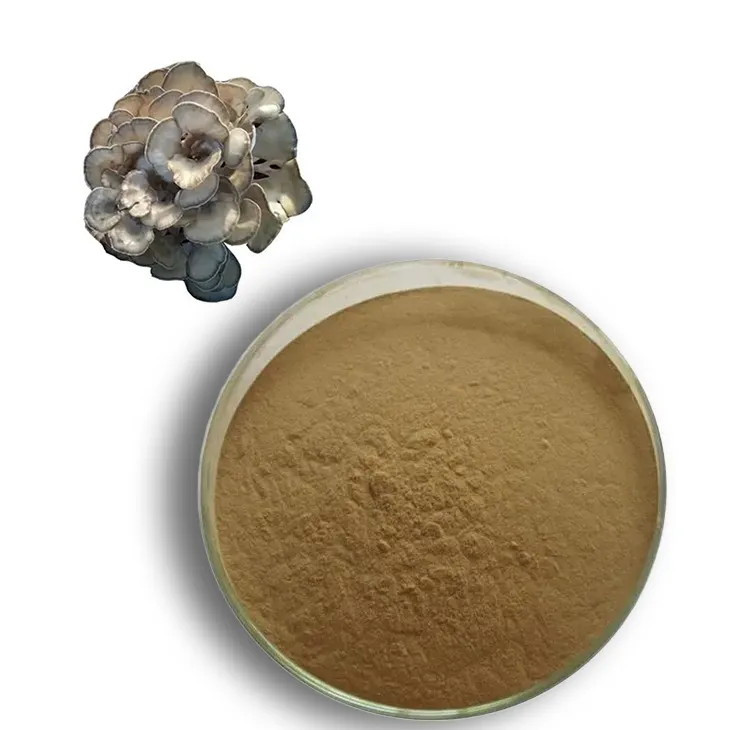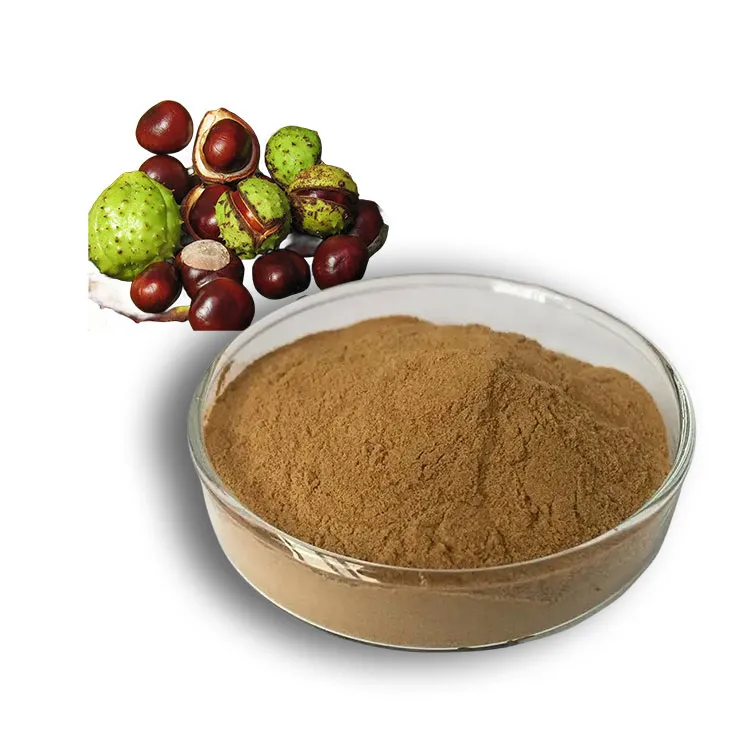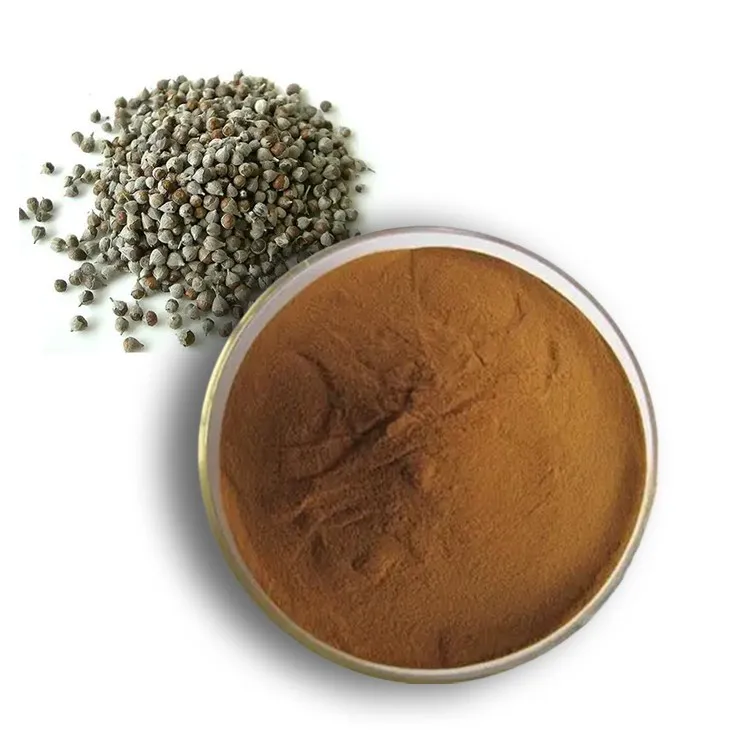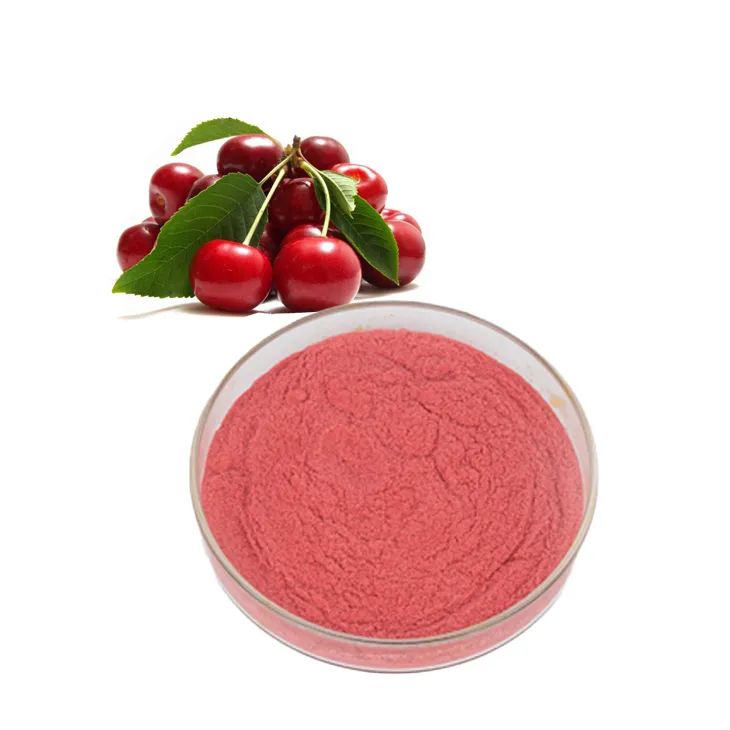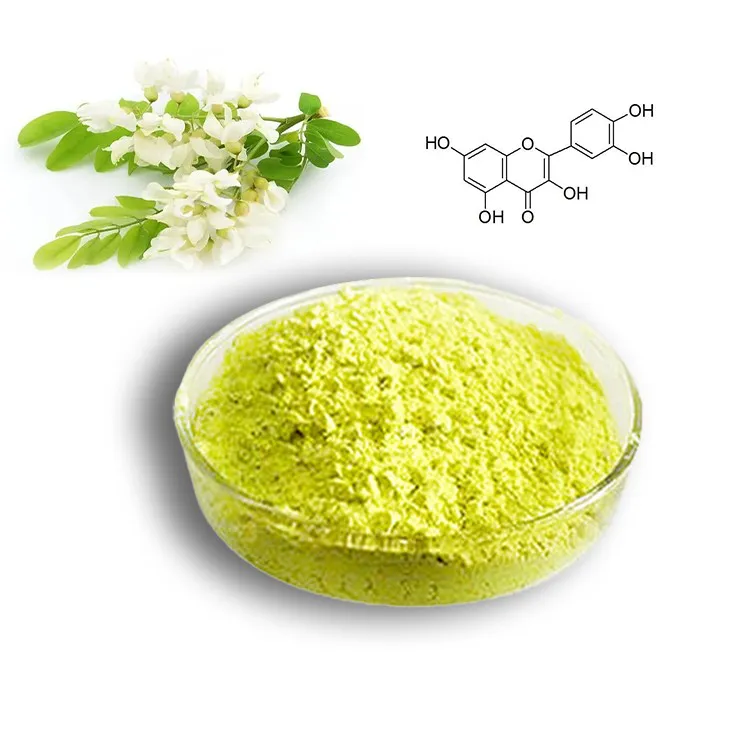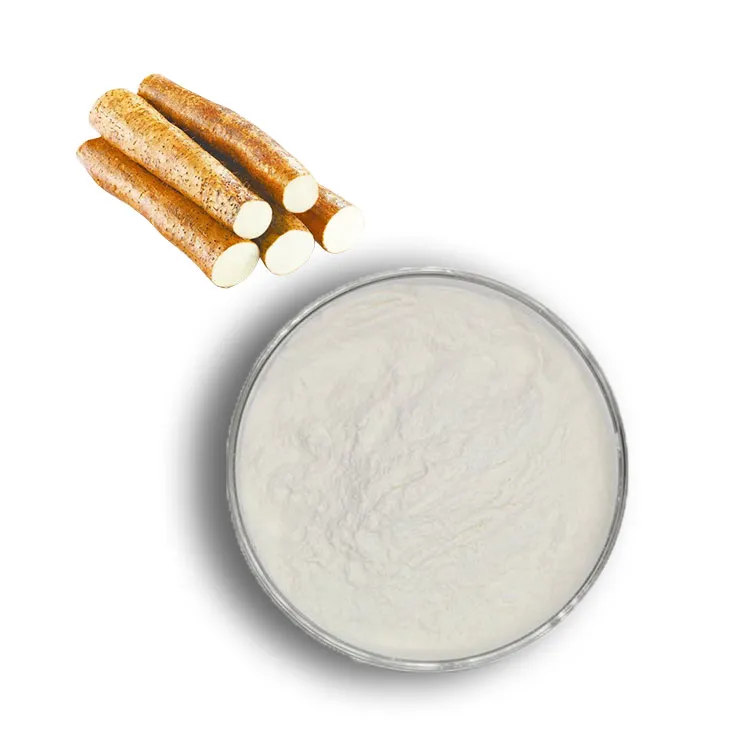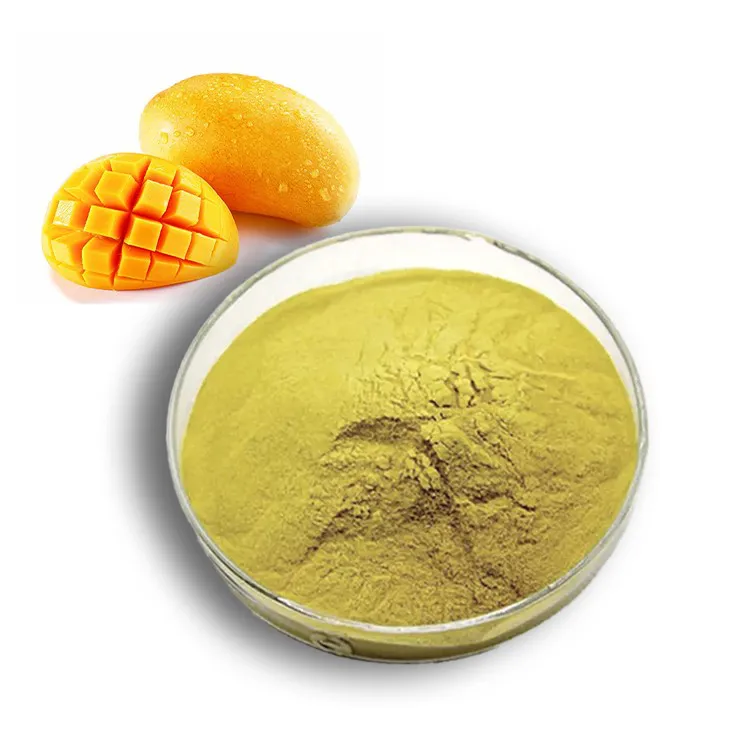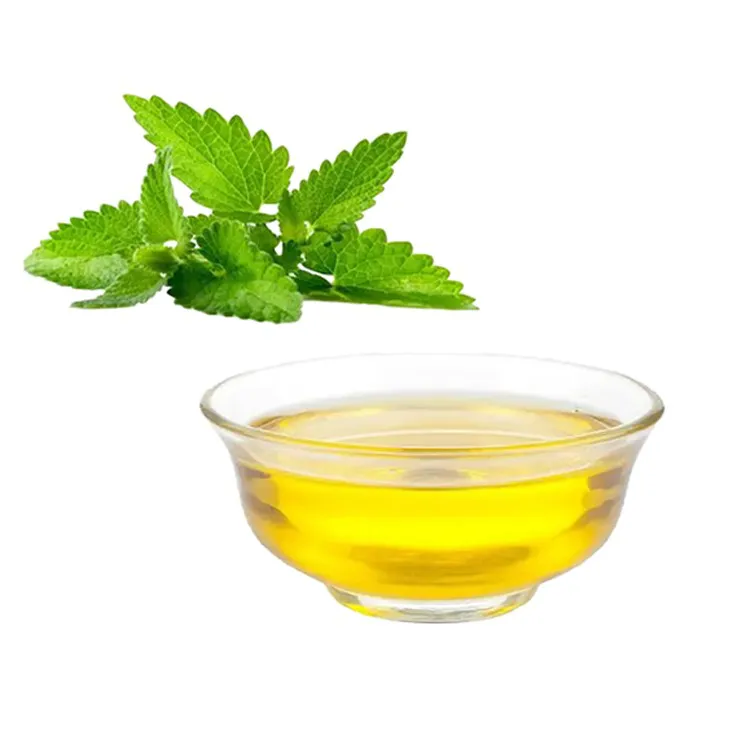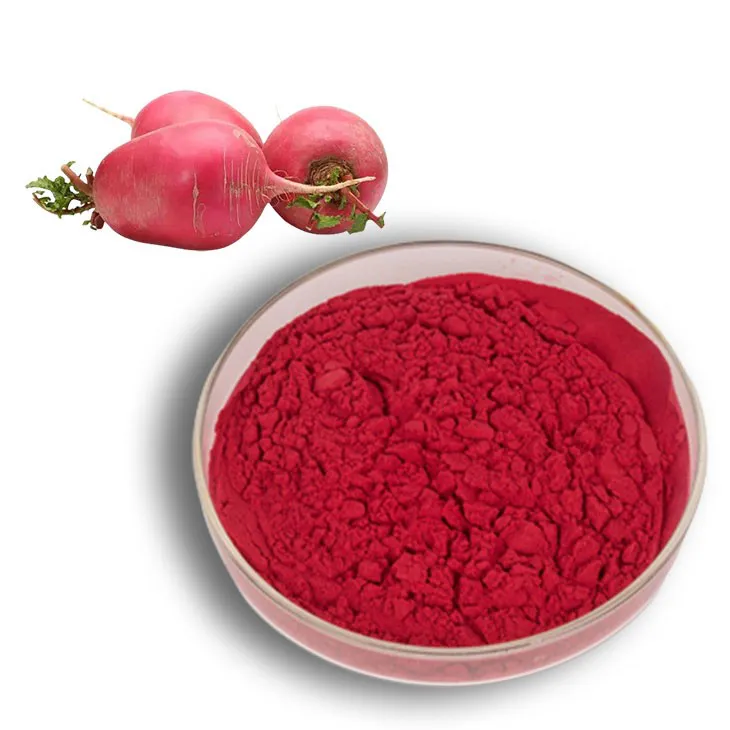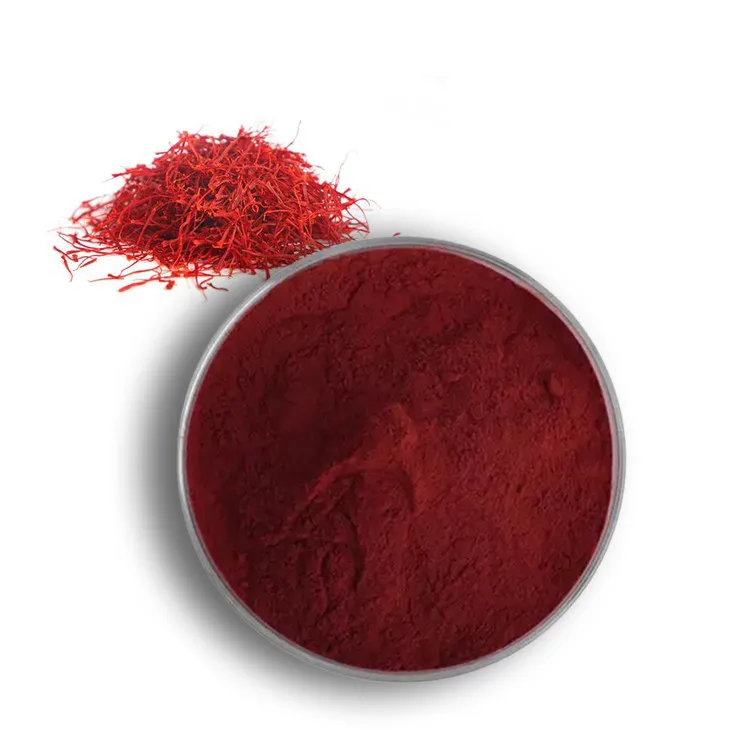- 0086-571-85302990
- sales@greenskybio.com
citrus bioflavonoids hesperidin
2023-09-27
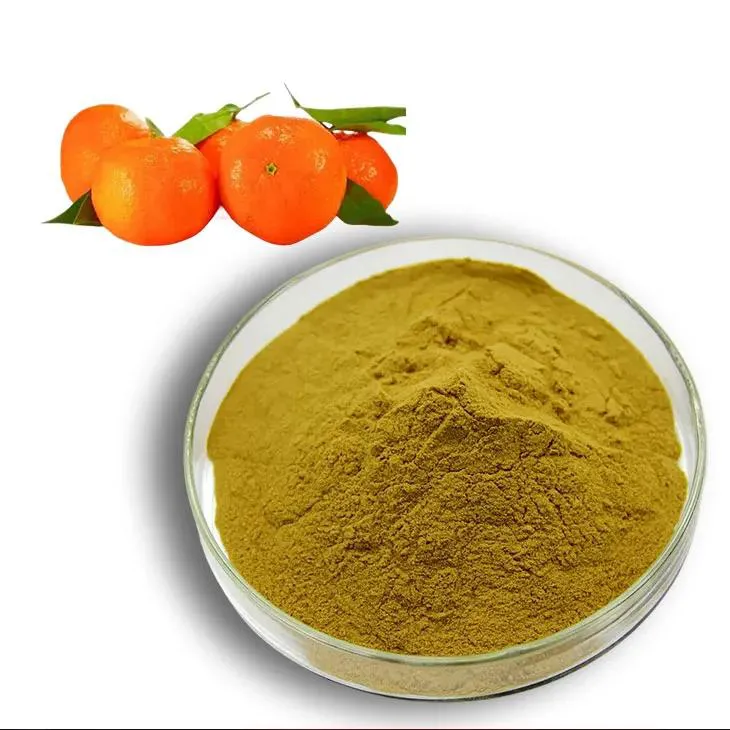
1. Definition and Chemical Properties of Hesperidin
1. Definition and Chemical Properties of Hesperidin
Hesperidin is a naturally occurring flavonoid, a type of plant pigment that is known for its antioxidant properties. It is a glycoside, which means it is a compound formed from a sugar molecule attached to another molecule, in this case, hesperetin. Hesperidin is the primary flavanone glycoside found in citrus fruits, particularly in the peels and membranes, and is responsible for many of the health benefits associated with these fruits.
Chemical Structure
The chemical formula for hesperidin is C28H34O15, and it has a molecular weight of approximately 610.57 g/mol. Its chemical structure consists of a flavanone aglycone, hesperetin, linked to a disaccharide composed of rhamnose and glucose. The presence of these sugars gives hesperidin its water-soluble properties, allowing it to be easily absorbed and utilized by the body.
Physical Properties
Hesperidin is a pale yellow crystalline solid that is soluble in water and slightly soluble in ethanol. It exhibits a bitter taste and is stable under normal storage conditions. Its UV-Vis spectrum shows maximum absorption in the range of 280-290 nm, which is characteristic of flavonoids.
Chemical Properties
Hesperidin is known for its antioxidant activity, which is attributed to the presence of the flavanone moiety in its structure. It can scavenge free radicals, thereby preventing oxidative damage to cells and tissues. Additionally, hesperidin has been shown to have anti-inflammatory, antiviral, and anticancer properties, although more research is needed to fully understand its mechanisms of action.
In summary, hesperidin is a flavonoid glycoside with a unique chemical structure that contributes to its diverse range of health-promoting properties. Its presence in citrus fruits makes it a readily available and beneficial component of a healthy diet. As we explore the subsequent sections, we will delve deeper into the sources, health benefits, and research surrounding this important bioflavonoid.
2. Sources and Dietary Intake of Hesperidin
2. Sources and Dietary Intake of Hesperidin
Hesperidin, a natural flavonoid found predominantly in citrus fruits, is an essential component of many diets around the world. Its presence in various food sources contributes to the overall health benefits attributed to a diet rich in fruits and vegetables.
Sources of Hesperidin:
1. Citrus Fruits: Hesperidin is most abundant in citrus fruits such as oranges, lemons, grapefruits, and tangerines. The rind or peel of these fruits contains the highest concentration of hesperidin.
2. Citrus Juices: Freshly squeezed orange juice and grapefruit juice are also good sources of hesperidin, although the concentration may vary depending on the processing methods.
3. Citrus Peels: Dried citrus peels, often used in teas and as flavorings, can be a concentrated source of hesperidin.
4. Supplements: Hesperidin is available as a dietary supplement, often in combination with other Citrus bioflavonoids.
Dietary Intake of Hesperidin:
The dietary intake of hesperidin varies greatly depending on individual dietary habits and the consumption of citrus fruits. Here are some general guidelines:
1. Daily Intake: The average daily intake of hesperidin from food sources alone is estimated to be around 100-300 mg for adults who regularly consume citrus fruits.
2. Supplemental Intake: For those who choose to take hesperidin supplements, the recommended dosage can range from 250 mg to 1,000 mg per day, depending on the product and the individual's health goals.
3. Bioavailability: The bioavailability of hesperidin from food sources is considered to be relatively high, as it is easily absorbed in the gastrointestinal tract.
4. Dietary Recommendations: Health organizations often recommend a diet rich in fruits and vegetables to ensure adequate intake of various nutrients, including hesperidin.
Factors Affecting Hesperidin Intake:
1. Cultural and Regional Differences: The consumption of citrus fruits varies by region and culture, affecting the average intake of hesperidin.
2. Seasonal Availability: The availability of fresh citrus fruits can influence the amount of hesperidin consumed, with higher intake during seasons when citrus fruits are abundant.
3. Processing Methods: The processing of citrus fruits, such as juicing or canning, can impact the hesperidin content.
4. Personal Preferences: Individual preferences for citrus fruits and the frequency of their consumption play a significant role in hesperidin intake.
In conclusion, hesperidin is widely available through a variety of citrus fruits and juices, making it a common component of many diets. The intake of hesperidin can be enhanced by incorporating more citrus fruits into one's diet or by taking supplements, provided that they are used responsibly and in accordance with recommended dosages.
3. Health Benefits of Hesperidin
3. Health Benefits of Hesperidin
Hesperidin, a natural flavonoid found predominantly in citrus fruits, has garnered significant attention for its potential health benefits. Its wide range of biological activities makes it a valuable component in the prevention and treatment of various diseases. Here are some of the key health benefits associated with hesperidin:
3.1 Antioxidant Properties
Hesperidin is a potent antioxidant that can neutralize free radicals in the body, thereby protecting cells from oxidative damage. This property is particularly important in preventing chronic diseases associated with oxidative stress, such as cardiovascular diseases and cancer.
3.2 Anti-Inflammatory Effects
Inflammation is a key factor in many diseases, including arthritis, asthma, and inflammatory bowel disease. Hesperidin has been shown to possess anti-inflammatory properties, which can help reduce inflammation and alleviate symptoms associated with these conditions.
3.3 Cardiovascular Health
Hesperidin's antioxidant and anti-inflammatory properties contribute to its cardioprotective effects. It can help lower blood pressure, improve blood flow, and reduce the risk of atherosclerosis by inhibiting the oxidation of LDL cholesterol.
3.4 Anti-Cancer Activity
Several studies have suggested that hesperidin may have anti-cancer properties. It has been shown to inhibit the growth of certain cancer cells, induce apoptosis (cell death) in cancer cells, and reduce the risk of certain types of cancer, such as breast and prostate cancer.
3.5 Anti-Viral and Anti-Bacterial Properties
Hesperidin has demonstrated antiviral activity against certain viruses, including the herpes simplex virus and influenza virus. Additionally, it has shown antibacterial properties against some strains of bacteria, which may contribute to its potential as a natural antimicrobial agent.
3.6 Skin Health
Hesperidin's antioxidant and anti-inflammatory properties can also benefit skin health. It can help protect the skin from environmental damage, reduce the signs of aging, and improve skin elasticity.
3.7 Bone Health
Some research suggests that hesperidin may have a positive impact on bone health by promoting bone mineralization and reducing bone resorption, which can help prevent osteoporosis.
3.8 Immune System Support
Hesperidin may also support the immune system by enhancing the production of certain immune cells and modulating the immune response.
3.9 Enhanced Absorption of Other Nutrients
As a bioflavonoid, hesperidin can improve the absorption and utilization of other nutrients, such as vitamin C, which can further enhance its health benefits.
It is important to note that while these health benefits are promising, more research is needed to fully understand the extent of hesperidin's effects and the optimal dosage for various health conditions. Additionally, individual responses to hesperidin may vary, and it is always recommended to consult with a healthcare professional before incorporating any new supplement into your diet.
4. Research Studies and Clinical Trials
4. Research Studies and Clinical Trials
Hesperidin, a prominent member of the Citrus bioflavonoids family, has been the subject of numerous research studies and clinical trials due to its potential health benefits. These studies have explored the effects of hesperidin on various aspects of human health, including cardiovascular health, inflammation, and immune function.
4.1 Cardiovascular Health
Several studies have focused on hesperidin's impact on cardiovascular health. A study published in the Journal of Nutrition found that hesperidin supplementation significantly reduced blood pressure in individuals with hypertension. Another study in the European Journal of Nutrition reported that hesperidin intake was associated with a lower risk of coronary heart disease.
4.2 Anti-Inflammatory Effects
The anti-inflammatory properties of hesperidin have been investigated in various research settings. A study in the journal Food and Chemical Toxicology demonstrated that hesperidin could inhibit the production of pro-inflammatory cytokines, suggesting its potential role in reducing inflammation-related conditions.
4.3 Antioxidant Activity
Clinical trials have also examined the antioxidant capacity of hesperidin. A study published in the Archives of Biochemistry and Biophysics showed that hesperidin could protect cells from oxidative stress, which is a significant factor in the development of chronic diseases.
4.4 Immune System Support
Research has indicated that hesperidin may support the immune system. A clinical trial in the journal Nutrients reported that hesperidin supplementation could enhance immune function by modulating the activity of immune cells.
4.5 Interaction with Other Compounds
Some studies have explored how hesperidin interacts with other compounds. For instance, a study in the journal Food Chemistry found that hesperidin could enhance the bioavailability of other bioflavonoids, potentially increasing their health benefits.
4.6 Safety and Toxicity Studies
While hesperidin is generally considered safe, researchers have also conducted studies to evaluate its safety profile. A toxicology study published in the journal Toxicology Letters reported that hesperidin was found to be non-toxic at typical dietary levels.
4.7 Limitations and Future Directions
Despite the promising findings, many of the studies on hesperidin have limitations, including small sample sizes and short study durations. Future research is needed to confirm these findings and to explore the long-term effects of hesperidin supplementation.
In conclusion, the research studies and clinical trials on hesperidin have provided valuable insights into its potential health benefits. However, more extensive and rigorous research is required to fully understand its mechanisms of action and to establish optimal dosages and safety profiles.
5. Interactions with Other Nutrients and Medications
5. Interactions with Other Nutrients and Medications
Hesperidin, as a natural flavonoid, can interact with various nutrients and medications due to its biochemical properties. Understanding these interactions is crucial for ensuring safety and maximizing the health benefits of hesperidin supplementation. Here are some key points to consider:
Nutrient Interactions:
- Vitamin C: Hesperidin has been reported to have a synergistic effect with vitamin C, enhancing its bioavailability and antioxidant capacity. This interaction can be beneficial for immune function and skin health.
- Dietary Fiber: The presence of dietary fiber can affect the absorption of hesperidin, potentially reducing its bioavailability. A balanced diet that includes fiber is still recommended, but the timing of hesperidin intake in relation to fiber intake may be important.
- Calcium and Iron: Hesperidin can bind to minerals like calcium and iron, which may reduce their absorption. It is advisable to separate the intake of hesperidin from calcium and iron supplements to avoid potential interactions.
Medication Interactions:
- Blood Thinners: Hesperidin has been shown to have anticoagulant properties. Individuals taking blood thinners like warfarin should consult with a healthcare provider before supplementing with hesperidin to avoid increased risk of bleeding.
- Antihypertensive Medications: Hesperidin may lower blood pressure, and thus, it could interact with medications used to treat hypertension. Monitoring blood pressure is essential when combining hesperidin with these medications.
- Cytochrome P450 Enzymes: Some studies suggest that hesperidin may interact with the cytochrome P450 enzyme system, which is involved in the metabolism of many drugs. This interaction could potentially affect the efficacy or safety of certain medications.
Precautions:
- Pregnancy and Lactation: The safety of hesperidin during pregnancy and lactation has not been well-established. Women in these stages should avoid hesperidin supplementation without consulting a healthcare provider.
- Allergies: Individuals with known allergies to citrus fruits may also be allergic to hesperidin and should exercise caution.
- Kidney and Liver Function: People with impaired kidney or liver function should consult a healthcare provider before taking hesperidin supplements, as their ability to metabolize and excrete the compound may be compromised.
It is always recommended to consult with a healthcare provider before starting any new supplement regimen, especially if you are taking medications or have pre-existing health conditions. This will help ensure that hesperidin supplementation is safe and appropriate for your individual needs.
6. Dosage Recommendations and Safety
6. Dosage Recommendations and Safety
Hesperidin, as a natural flavonoid, is generally considered safe for consumption. However, it is important to note that dosage recommendations for hesperidin have not been well established due to the limited number of clinical trials and research studies. The dosage can vary depending on the individual's health condition, age, and other factors.
General Dosage Recommendations
- Adults: The typical dosage for adults ranges from 250 mg to 500 mg per day. This can be taken in divided doses, such as 125 mg to 250 mg twice a day.
- Children: There is limited information on the appropriate dosage for children. It is advised to consult a healthcare professional before administering hesperidin to children.
Factors Influencing Dosage
- Health Condition: Individuals with specific health conditions, such as cardiovascular diseases or diabetes, may require a different dosage. It is crucial to consult a healthcare provider for personalized recommendations.
- Pregnancy and Lactation: The safety of hesperidin during pregnancy and lactation has not been well studied. It is recommended to avoid its use or consult a healthcare provider for guidance during these periods.
- Interaction with Medications: If you are taking medications, especially those that interact with hesperidin, it is essential to discuss the potential dosage adjustments with your healthcare provider.
Safety Considerations
- Allergic Reactions: Some individuals may experience allergic reactions to hesperidin or its components. Symptoms can include skin rashes, itching, and swelling. If such symptoms occur, discontinue use and consult a healthcare provider.
- Gastrointestinal Issues: High doses of hesperidin may cause gastrointestinal discomfort, including diarrhea, stomach pain, and nausea. It is advisable to start with a lower dose and gradually increase it as tolerated.
- Long-Term Use: The long-term safety of hesperidin has not been extensively studied. It is recommended to use it under the guidance of a healthcare professional, especially for extended periods.
Monitoring and Adjustments
- Regular Check-ups: Regular health check-ups are essential to monitor the effects of hesperidin and make necessary adjustments to the dosage.
- Communication with Healthcare Providers: Keep your healthcare provider informed about your hesperidin intake, including the dosage and any supplements or medications you are taking concurrently.
In conclusion, while hesperidin is generally considered safe, it is crucial to follow general dosage recommendations and consult a healthcare provider for personalized advice. Always prioritize safety and monitor your health while using hesperidin supplements.
7. Commercial Products Containing Hesperidin
7. Commercial Products Containing Hesperidin
Hesperidin, a prominent member of the Citrus bioflavonoids family, is widely recognized for its potential health benefits. As consumer awareness and demand for natural health supplements increase, various commercial products containing hesperidin have emerged in the market. These products cater to a broad range of health-conscious individuals seeking to enhance their well-being through dietary supplementation.
Dietary Supplements
Dietary supplements are among the most common commercial products containing hesperidin. These supplements come in various forms, including capsules, tablets, and powders. Manufacturers often combine hesperidin with other bioflavonoids or vitamins to create synergistic effects that may amplify its health benefits. For instance, hesperidin is frequently paired with vitamin C to support immune function and collagen synthesis.
Health and Wellness Drinks
Functional beverages infused with hesperidin are gaining popularity as part of a healthy lifestyle. These drinks are designed to provide quick and convenient access to the benefits of hesperidin, such as improved cardiovascular health and antioxidant support. They can be found in the form of ready-to-drink beverages, powders that mix with water, or even energy shots.
Skincare Products
The antioxidant and anti-inflammatory properties of hesperidin have also found their way into the skincare industry. Topical applications of hesperidin can help protect the skin from environmental stressors and promote a more youthful appearance. Products such as creams, serums, and masks that contain hesperidin are marketed to address concerns like skin aging, pigmentation, and inflammation.
Sports Nutrition
Athletes and fitness enthusiasts often seek supplements that can support their performance and recovery. Hesperidin, with its potential to improve vascular health and reduce inflammation, is an attractive ingredient for sports nutrition products. It can be found in pre-workout supplements, post-workout recovery formulas, and endurance-focused products.
Animal Health Products
The benefits of hesperidin are not limited to human health. Pet owners are increasingly looking for natural ways to support their pets' health, and hesperidin is being incorporated into pet supplements and veterinary formulations. These products aim to improve cardiovascular health, support the immune system, and provide antioxidant protection for pets.
Food and Beverage Fortification
To increase the nutritional value of their products, some food and beverage manufacturers are fortifying their offerings with hesperidin. This can be seen in a variety of products, from fruit juices and smoothies to energy bars and snacks. Fortification helps to provide consumers with an additional source of hesperidin in their daily diets.
When selecting commercial products containing hesperidin, consumers should consider factors such as the product's purity, the concentration of hesperidin, and the presence of other beneficial ingredients. It is also important to choose products from reputable manufacturers that adhere to good manufacturing practices and provide transparent information about their ingredients and production processes.
In conclusion, the commercial availability of hesperidin in various forms offers consumers a range of options to incorporate this beneficial bioflavonoid into their health regimens. As research continues to uncover the potential benefits of hesperidin, it is likely that its presence in commercial products will continue to expand, providing even more opportunities for consumers to experience its health-promoting effects.
8. Future Research Directions and Challenges
8. Future Research Directions and Challenges
As the understanding of hesperidin's role in health and disease prevention continues to grow, future research directions will likely focus on several key areas. These include:
8.1 Elucidating Mechanisms of Action
A deeper investigation into the precise mechanisms by which hesperidin exerts its health benefits is necessary. This includes understanding its interactions with various biological pathways and its influence on gene expression.
8.2 Expanding Clinical Trials
While preliminary studies have shown promising results, more extensive clinical trials with larger sample sizes and longer durations are needed to confirm the efficacy and safety of hesperidin supplementation.
8.3 Investigating Synergistic Effects
Research into the synergistic effects of hesperidin with other bioflavonoids and nutrients could reveal more about its potential benefits when used in combination with other compounds.
8.4 Personalized Medicine Approach
Exploring how individual genetic variations affect the metabolism and response to hesperidin could pave the way for personalized medicine approaches, tailoring hesperidin supplementation to individual needs.
8.5 Long-Term Safety Studies
Long-term safety studies are essential to monitor any potential adverse effects of hesperidin supplementation, especially at higher doses.
8.6 Environmental and Agricultural Research
With the increasing demand for natural products, research into sustainable agricultural practices for hesperidin-rich crops is crucial to ensure environmental sustainability.
8.7 Standardization of Hesperidin Products
Developing standardized methods for the extraction and purification of hesperidin from natural sources will be important for ensuring the quality and consistency of commercial products.
8.8 Addressing Regulatory Challenges
As the use of hesperidin in dietary supplements and functional foods increases, addressing regulatory challenges and establishing clear guidelines for its use will be necessary to protect consumers and ensure product safety.
8.9 Public Health Implications
Research into the public health implications of hesperidin, including its potential role in reducing the burden of chronic diseases, will be vital for informing health policy and dietary recommendations.
8.10 Technological Advancements
Utilizing advancements in technology, such as nanotechnology and bioinformatics, could enhance the bioavailability and effectiveness of hesperidin, as well as facilitate the analysis of its complex interactions within the body.
The challenges ahead include not only scientific and clinical hurdles but also logistical, regulatory, and ethical considerations. Addressing these challenges will require a collaborative effort from researchers, healthcare professionals, policymakers, and the public to ensure that the potential of hesperidin is fully realized for the benefit of human health.
9. Conclusion and Summary
9. Conclusion and Summary
In conclusion, hesperidin, a citrus bioflavonoid, has garnered significant attention for its potential health benefits and therapeutic applications. As a natural compound found predominantly in citrus fruits, hesperidin is readily available in the diet and can be easily incorporated into a healthy lifestyle.
The chemical properties of hesperidin, including its structure and solubility, contribute to its bioavailability and interaction with other nutrients and medications. While its bioavailability is relatively low, research suggests that it can still exert beneficial effects on health.
The health benefits of hesperidin are extensive, ranging from antioxidant and anti-inflammatory actions to cardiovascular and immune system support. It has also been linked to improved glucose metabolism and reduced risk of certain cancers. However, more research is needed to fully understand the mechanisms behind these benefits and to establish optimal dosages for specific health outcomes.
Clinical trials and research studies have provided valuable insights into the efficacy and safety of hesperidin supplementation. While some studies have reported positive results, others have shown mixed or inconclusive findings. This highlights the need for more rigorous and well-designed studies to further investigate the potential of hesperidin in disease prevention and treatment.
Interactions with other nutrients and medications are an important consideration when incorporating hesperidin into a health regimen. While some interactions may enhance the bioavailability or efficacy of hesperidin, others may reduce its effectiveness or cause adverse effects. Therefore, it is crucial to consult with healthcare professionals before starting any supplementation regimen.
Dosage recommendations and safety guidelines are essential for ensuring the safe and effective use of hesperidin. While no specific dosage has been established, it is generally advised to consume hesperidin through a balanced diet or as directed by a healthcare professional. Additionally, individuals with certain health conditions or taking specific medications should exercise caution when using hesperidin supplements.
Commercial products containing hesperidin, such as dietary supplements and functional foods, offer convenient ways to increase hesperidin intake. However, it is important to choose high-quality products from reputable manufacturers and to follow the recommended dosages to ensure safety and effectiveness.
Looking ahead, future research directions and challenges include elucidating the mechanisms of action of hesperidin, optimizing its bioavailability, and investigating its potential synergistic effects with other nutrients and compounds. Addressing these challenges will help to further unlock the therapeutic potential of hesperidin and contribute to the development of novel health-promoting strategies.
In summary, hesperidin is a promising bioflavonoid with a wide range of health benefits. While more research is needed to fully understand its potential, incorporating hesperidin-rich foods into the diet or considering supplementation under the guidance of healthcare professionals can contribute to overall health and well-being.
- ▶ Hesperidin
- ▶ Citrus Bioflavonoids
- ▶ Plant Extract
- ▶ lycopene
- ▶ Diosmin
- ▶ Grape seed extract
- ▶ Sea buckthorn Juice Powder
- ▶ Fruit Juice Powder
- ▶ Hops Extract
- ▶ Artichoke Extract
- ▶ Mushroom extract
- ▶ Astaxanthin
- ▶ Green Tea Extract
- ▶ Curcumin
- ▶ Horse Chestnut Extract
- ▶ Other Product
- ▶ Boswellia Serrata Extract
- ▶ Resveratrol
- ▶ Marigold Extract
- ▶ Grape Leaf Extract
- ▶ New Product
- ▶ Aminolevulinic acid
- ▶ Cranberry Extract
- ▶ Red Yeast Rice
- ▶ Red Wine Extract
-
Maitake Mushroom Extract
2023-09-27
-
Horse Chestnut Extract
2023-09-27
-
Chaste Berry Extract
2023-09-27
-
Acerola Extract
2023-09-27
-
Quercetin
2023-09-27
-
Yam Extract
2023-09-27
-
Mango flavored powder
2023-09-27
-
Peppermint Oil
2023-09-27
-
Beetroot Powder
2023-09-27
-
Saffron Extract Powder
2023-09-27











